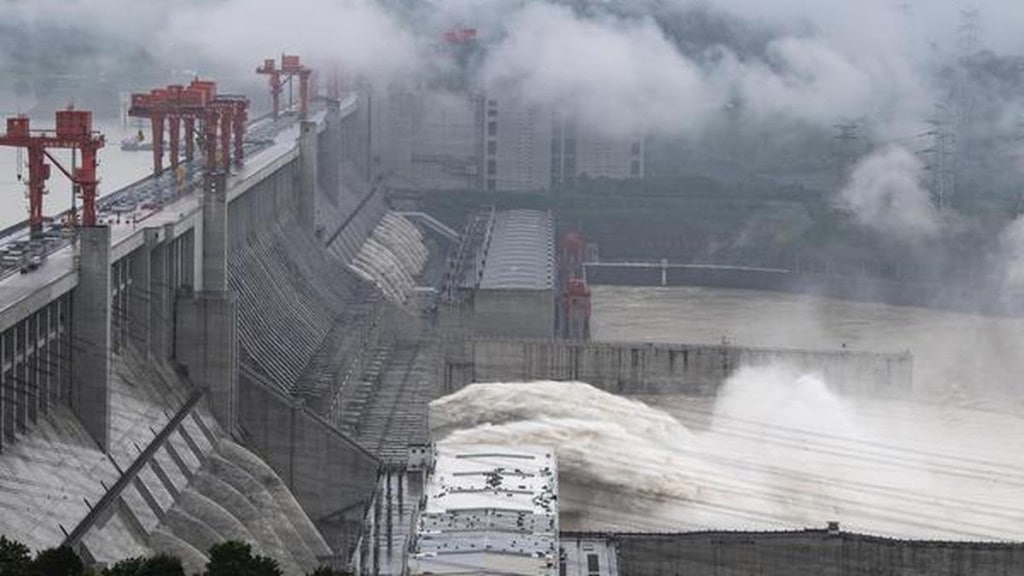India has firmly voiced its opposition to China’s ambitious hydropower project on the Yarlung Tsangpo River and the creation of new counties in the disputed region of Ladakh. These developments, both in Tibet and in areas claimed by India, have raised serious concerns regarding territorial integrity, water security, and environmental impacts.
Immediate Diplomatic Protest Over China’s Yarlung Tsangpo Dam
China’s announcement in December 2024 about the construction of the world’s largest hydropower dam on the Yarlung Tsangpo River, which becomes the Brahmaputra River as it enters India, prompted an immediate and sharp reaction from New Delhi. India has long held concerns about China’s growing control over the waters of the Brahmaputra, as this river is critical to millions of people in India’s northeastern states and downstream in Bangladesh.
During the weekly briefing in New Delhi on Friday (Jan 3, 2024), Ministry of External Affairs’ (MEA), official spokesperson Randhir Jaiswal, made it clear that the construction of the dam would not be tolerated without proper consultation and transparency. Jaiswal emphasized, “We have consistently expressed our concerns through expert-level and diplomatic channels. As a lower riparian state with established user rights to the waters of the river, we will continue to monitor developments and take necessary measures to protect our interests.”
The massive hydropower dam, which could generate three times the energy of the Three Gorges Dam, raises not only environmental and ecological concerns but also the strategic implications of China potentially controlling or diverting the flow of the Brahmaputra. Such an action could severely impact water availability for India’s northeastern states, particularly Arunachal Pradesh and Assam, both of which are highly dependent on the river.
India has made it clear that any unilateral action by China on the river could have far-reaching repercussions, and China must adhere to the principle of transparency and consultation with downstream countries.
Strong Opposition to New Chinese Counties in Ladakh
In addition to concerns over the dam, India’s position on China’s creation of new counties in the Hotan Prefecture of Xinjiang, which fall within the Indian Union Territory of Ladakh, has been similarly resolute. Following China’s December 2024 announcement, India quickly lodged a formal protest, rejecting any changes to the status of Ladakh.
Jaiswal again reaffirmed India’s stance, stating, “We have never accepted the illegal Chinese occupation of Indian territory in this area. The creation of new counties will neither have any bearing on India’s long-standing and consistent position regarding its sovereignty over Ladakh nor lend legitimacy to China’s forcible occupation of the region.”
India’s territorial claims over Ladakh have been consistent, and the establishment of new administrative units by China is seen as a further encroachment. New Delhi made it clear that China’s unilateral actions will not be recognized. The creation of these counties is viewed as a clear attempt by China to solidify its control over the disputed region, a move that has been strongly resisted by India for decades.
China’s Growing Influence in Tibet: Environmental and Geopolitical Concerns
Both of these issues are part of China’s broader strategy to assert control over Tibet, an area it has occupied since the 1950s. In recent years, China has ramped up its infrastructure projects in Tibet, particularly in the form of hydropower dams and territorial reorganization. The Yarlung Tsangpo project is the largest and most ambitious among them, with reports suggesting that it could cost upwards of $127 billion and involve extensive tunnelling through mountainous terrain.
While Chinese authorities argue that these projects will contribute to local prosperity and China’s climate goals, human rights and environmental groups have raised alarm about the potential displacement of local Tibetan communities and the destruction of fragile ecosystems. Tibet’s natural landscapes, including the Tibetan Plateau, are some of the most biodiverse and ecologically sensitive in the world, and large-scale dam construction in these areas could have devastating effects.
Additionally, Tibetans living in the affected areas have faced repression in recent years, with reports of protests against these projects being met with violent crackdowns. In 2024, hundreds of Tibetans protesting the Gangtuo Dam were reportedly detained and beaten. These projects raise serious humanitarian concerns, as the rights and welfare of Tibetans are often sidelined in the name of development.
India’s Strategic Calculations: Sovereignty and Regional Stability
As a lower riparian state, India has long been wary of China’s growing control over transboundary rivers. The Yarlung Tsangpo Dam could provide China with unprecedented leverage over the flow of the Brahmaputra, a river vital to India’s food and water security. India is closely monitoring the situation and is prepared to take whatever measures necessary to protect its interests.
A Firm Stance in the Face of Aggression
India’s response to China’s actions in Tibet underscores a firm commitment to protecting its sovereignty and strategic interests. Whether it’s the construction of the Yarlung Tsangpo Dam or the creation of new counties in Ladakh, India has made it clear that it will not allow China’s unilateral actions to undermine its territorial claims or water security.
As India faces mounting challenges from its northern neighbour, its response will likely evolve to incorporate a combination of diplomatic pressure, regional cooperation, and strategic infrastructure development. In doing so, India aims to protect its future and ensure that its voice remains heard on the global stage, even as China intensifies its regional ambitions.

